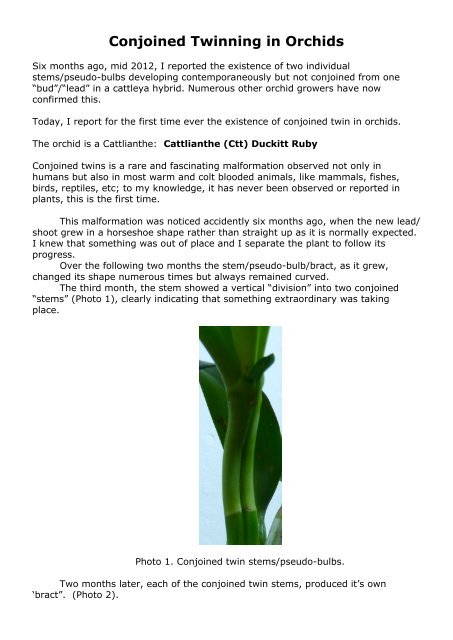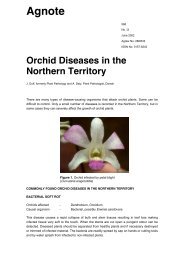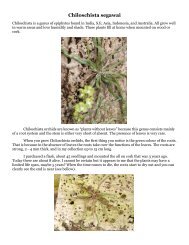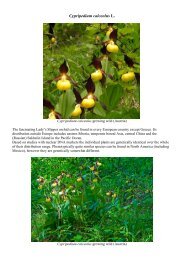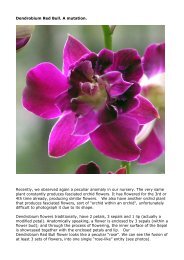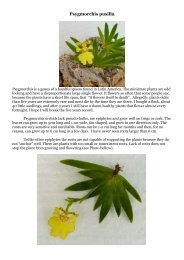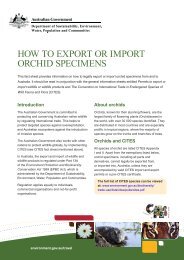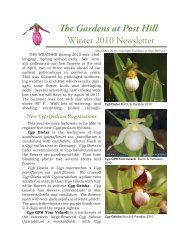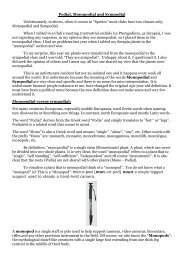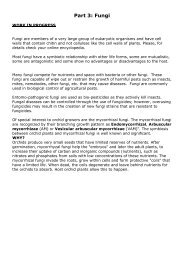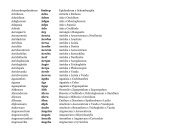Conjoined Twinning in Orchids - Orchids-World
Conjoined Twinning in Orchids - Orchids-World
Conjoined Twinning in Orchids - Orchids-World
Create successful ePaper yourself
Turn your PDF publications into a flip-book with our unique Google optimized e-Paper software.
<strong>Conjo<strong>in</strong>ed</strong> <strong>Tw<strong>in</strong>n<strong>in</strong>g</strong> <strong>in</strong> <strong>Orchids</strong><br />
Six months ago, mid 2012, I reported the existence of two <strong>in</strong>dividual<br />
stems/pseudo-bulbs develop<strong>in</strong>g contemporaneously but not conjo<strong>in</strong>ed from one<br />
“bud”/“lead” <strong>in</strong> a cattleya hybrid. Numerous other orchid growers have now<br />
confirmed this.<br />
Today, I report for the first time ever the existence of conjo<strong>in</strong>ed tw<strong>in</strong> <strong>in</strong> orchids.<br />
The orchid is a Cattlianthe: Cattlianthe (Ctt) Duckitt Ruby<br />
<strong>Conjo<strong>in</strong>ed</strong> tw<strong>in</strong>s is a rare and fasc<strong>in</strong>at<strong>in</strong>g malformation observed not only <strong>in</strong><br />
humans but also <strong>in</strong> most warm and colt blooded animals, like mammals, fishes,<br />
birds, reptiles, etc; to my knowledge, it has never been observed or reported <strong>in</strong><br />
plants, this is the first time.<br />
This malformation was noticed accidently six months ago, when the new lead/<br />
shoot grew <strong>in</strong> a horseshoe shape rather than straight up as it is normally expected.<br />
I knew that someth<strong>in</strong>g was out of place and I separate the plant to follow its<br />
progress.<br />
Over the follow<strong>in</strong>g two months the stem/pseudo-bulb/bract, as it grew,<br />
changed its shape numerous times but always rema<strong>in</strong>ed curved.<br />
The third month, the stem showed a vertical “division” <strong>in</strong>to two conjo<strong>in</strong>ed<br />
“stems” (Photo 1), clearly <strong>in</strong>dicat<strong>in</strong>g that someth<strong>in</strong>g extraord<strong>in</strong>ary was tak<strong>in</strong>g<br />
place.<br />
Photo 1. <strong>Conjo<strong>in</strong>ed</strong> tw<strong>in</strong> stems/pseudo-bulbs.<br />
Two months later, each of the conjo<strong>in</strong>ed tw<strong>in</strong> stems, produced it’s own<br />
‘bract”. (Photo 2).
Photo 2. <strong>Conjo<strong>in</strong>ed</strong> tw<strong>in</strong> bract (like a snake or lizard with two heads.)<br />
Photo 3. The two clearly separated bracts each with it’s own sheath.
I realized that I was witness<strong>in</strong>g for the first time the development of a<br />
conjo<strong>in</strong>ed tw<strong>in</strong> <strong>in</strong> a plant, an orchid <strong>in</strong> this case.<br />
The reasons beh<strong>in</strong>d the cont<strong>in</strong>uously shape chang<strong>in</strong>g of the “bract”, became<br />
also clear. It was obvious that the two conjo<strong>in</strong>ed “stems”, although both were<br />
grow<strong>in</strong>g contemporaneously, they were compet<strong>in</strong>g aga<strong>in</strong>st each other, as both were<br />
<strong>in</strong> many ways <strong>in</strong>dependent. It is not different to a snake, lizard or mammal form<strong>in</strong>g<br />
two heads on one s<strong>in</strong>gle body.<br />
Today, six months, each bract has it’s own f<strong>in</strong>al growth and sheath and<br />
should, theoretically at least, given time produce a flower. The union, <strong>in</strong> this case,<br />
is symmetrical and the conjo<strong>in</strong>ed bracts are equal.<br />
TWO WEEKS LATER<br />
A picture = 1000 words.


